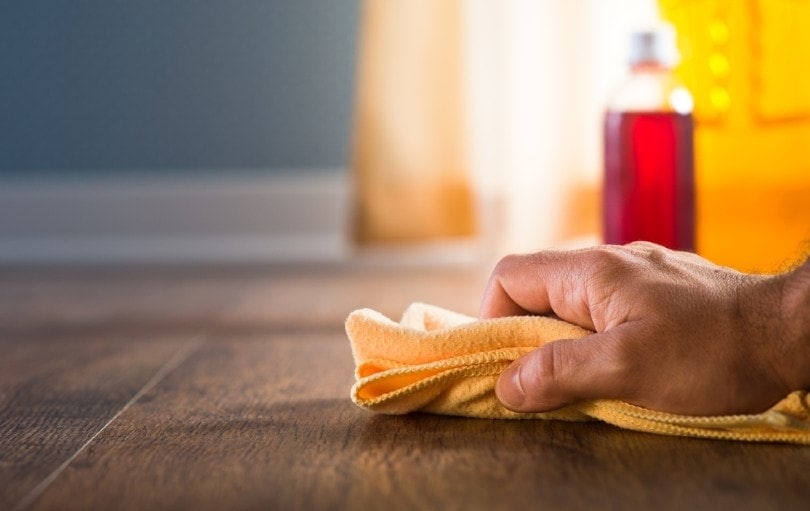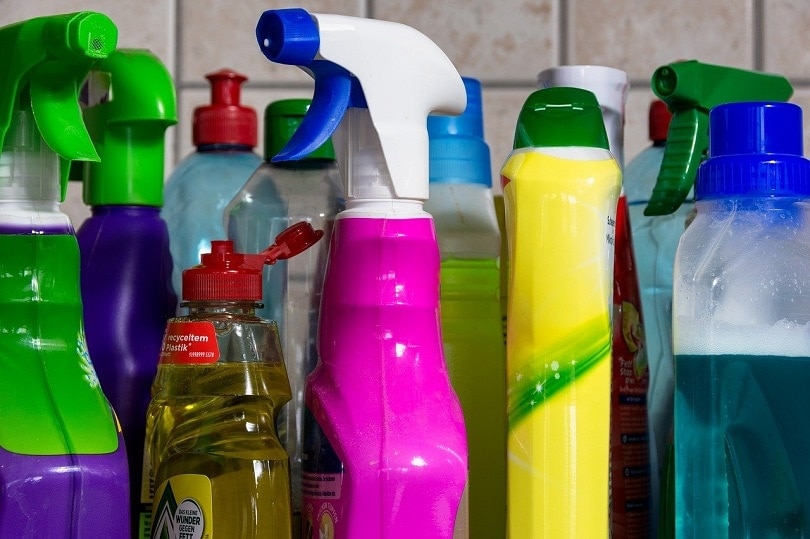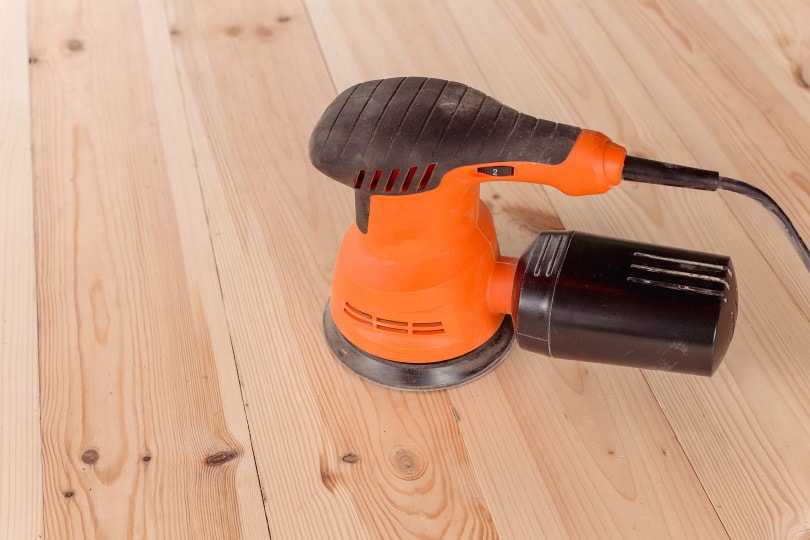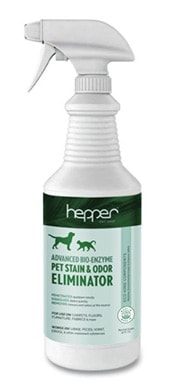How to Remove Old Cat Urine From Hardwood Floors: 3 Practical Options
-
Pete Ortiz
- Last updated:

There are few odors as distinctive and as repugnant as the smell of cat urine. Even after you clean it up, it lingers.
We completely understand the frustration, and that’s why we created this guide. It will walk you through a few different methods that will help you get that cat urine smell off your hardwood floors.
The 3 Top Ways to Remove Old Cat Urine From Hardwood Floors
1. Homemade Formulas

| Difficulty Level | Easy |
| Cost | Low |
| Effectiveness | Low |
| What You’ll Need | Hydrogen peroxide, white vinegar, warm water, baking soda, sponge, rags |
The first thing that you want to do is spot-clean the area with regular cleaning supplies, like water and a sponge. Once you clean the area, don’t use any of the cleaning supplies again; otherwise, you could be spreading the smell right back to the floor.
Next, mix 1 cup of white vinegar into a bucket of water, and mix it thoroughly.
Scrub the mixture onto the affected area. If the area has any stains, they should come off during this step. Next, evaluate the area to see if any stains are left. If they are, use hydrogen peroxide, and let it dry on the affected area.
Finally, add baking soda to the area. Let it sit for about an hour, then use a vacuum to clean it up.
- Easy to do
- Only uses household products
- Removes the smell
- Prone to repeat offenders
2. Powerful Products/Enzymatic Cleaners

| Difficulty Level | Easy |
| Cost | Medium |
| Effectiveness | Medium |
| What You’ll Need | Enzyme cleaner, water, sponge, and rags |
To start with these cleaners, simply clean up the area with water and a sponge. Once you’ve cleaned up the bulk of the mess, it’s time to use the special cleaner. Follow the specific instructions on the cleaner that you purchase, but be sure to start with the cleaner, not the enzyme product. If the homemade solutions simply aren’t getting the job done, consider using professional products. These do a great job of cleaning up stains, and they have the added benefit of removing the smell with an enzyme cleaner, which helps prevent repeat offenses.
Let the enzyme cleaner soak in thoroughly before cleaning it off, so it has plenty of time to counteract any of the smells that could lead your cat to come back.
Once you finish using the professional cleaners and enzyme products, lightly rinse off the area with water and dry it out completely.
Are you looking for an enzyme cleaner that can keep your house clean and your pet happy? We recommend the Hepper Advanced Bio-Enzyme Pet Stain & Odor Eliminator Spray, which permanently gets rid of the most stubborn stains and smells. There’s even a 100% satisfaction guarantee so you can try this cleaner risk-free! Click here to order your first bottle.
At House Grail, we’ve admired Hepper for many years, and decided to take a controlling ownership interest so that we could benefit from the outstanding products of this cool cat company!
- Easy to do
- Removes the smell
- Removes surface enzymes, which helps reduce repeat offenders
- Must purchase additional products
3. Sanding and Replacing Wood

| Difficulty Level | Hard |
| Cost | High |
| Effectiveness | High |
| What You’ll Need | Tape, plastic sheeting, sander, pry bar, broom, paintbrush, and floor sealant |
If you can’t get the stain or smell out with the previous cleaning products or if you have a permeable wood surface, you’ll need to sand or replace the wood to get the smell out. It’s a bit more of a process, but it’s a surefire way to get all of the cat urine smell out of the wood.
The first thing that you need to do with this method is to check the thickness of the wood. You don’t want to start sanding the wood only to find out that you can’t reinstall it or that you sand through the entire piece. If the piece is near the tongue-and-groove, you can’t sand it, and you’ll need to replace the piece.
Next, tape up plastic sheeting around the room to keep the dust from escaping and spreading all over your house while you’re sanding.
Now it’s finally time to sand. Start with a high-grit sandpaper, and work your way down to a fine-grit paper. Be careful around baseboards and quarter-round. Some people prefer to remove these with a prybar before sanding, but you can sand around them if you’re careful.
Don’t press down on the sander; instead, keep it moving at all times and let the sander’s weight do the work. It might take a little longer, but it’ll keep you from ruining the boards. After you sand everything down, clean up the debris and sawdust.
Finally, apply a new finish to seal everything back up!
This is by far the longest process, but it’s also the most effective.
- Completely removes odors
- Leaves floors in like-new condition
- Requires a ton of work
- Expensive
Impermeable vs. Permeable Wood Surfaces
One of the most important factors that you need to consider when selecting a cleaning method is whether the wood is impermeable or permeable. In short, the difference is whether the wood can absorb liquids.
Impermeable woods don’t absorb liquids, and as such, they do a much better job at preventing cat urine from soaking in and lingering. If you’re working with impermeable wood, chances are one of the first two methods on this list will work for you.
However, if the wood is permeable, meaning that the wood absorbs liquids, you’ll likely need to sand and replace sections of the flooring. The odor has soaked into the wood, and simply cleaning the surface won’t remove it.
Related Read: How to Remove Black Urine Stains from Hardwood Floors: 10 Practical Options
Conclusion
Don’t settle for having a hardwood floor that smells like cat urine. It might be a bit of a challenge, but we’re confident that with a bit of determination and hard work, you can have your hardwood floors looking and smelling like new again.
Featured Image Credit: Stokkete, Shutterstock
Contents



